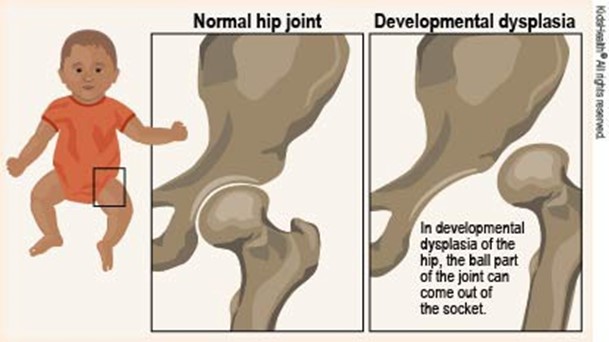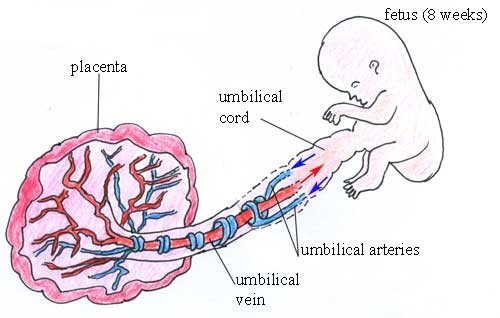The nurse is talking to a parent about signs of developmental hip dysplasia and understands that which of the following is NOT a sign?
Limited abduction of the affected hip.
All of the above.
Symmetry of the hips.
Shortening of the femur.
The Correct Answer is C
Symmetry of the hips is a normal finding and is not a sign of developmental hip dysplasia.

Choice A is not correct because limited abduction of the affected hip is a sign of developmental hip dysplasia.
Choice B is not correct because it includes all the other choices.
Choice D is not correct because shortening of the femur can be a sign of developmental hip dysplasia.
Nursing Test Bank
Naxlex Comprehensive Predictor Exams
Related Questions
Correct Answer is A
Explanation
The umbilical vein carries oxygen-rich blood to the fetus from the placenta.
The umbilical vein is an important part of fetal circulation and carries oxygenated blood from the placenta into the growing fetus.

Choice B is incorrect because the two umbilical arteries carry deoxygenated blood from the fetus to the placenta23.
Choice C is incorrect because there are not two umbilical veins, but only one12.
Choice D is incorrect because it is not the one umbilical artery that carries oxygen-rich blood to the fetus from the placenta, but rather the one umbilical vein14.
Correct Answer is B
Explanation
Blood volume increases significantly within the first few weeks of gestation and increases progressively throughout the pregnancy.
The total blood volume increase varies from 20% to 100% above prepregnancy levels, usually close to 45%1.
Choice A is incorrect because the increase is usually close to 45%, not 20% to 25%.
Choice C is incorrect because the increase is usually close to 45%, not 50% to 55%.
Choice D is incorrect because the increase is usually close to 45%, not 30% to 35%.
Whether you are a student looking to ace your exams or a practicing nurse seeking to enhance your expertise , our nursing education contents will empower you with the confidence and competence to make a difference in the lives of patients and become a respected leader in the healthcare field.
Visit Naxlex, invest in your future and unlock endless possibilities with our unparalleled nursing education contents today
Report Wrong Answer on the Current Question
Do you disagree with the answer? If yes, what is your expected answer? Explain.
Kindly be descriptive with the issue you are facing.
